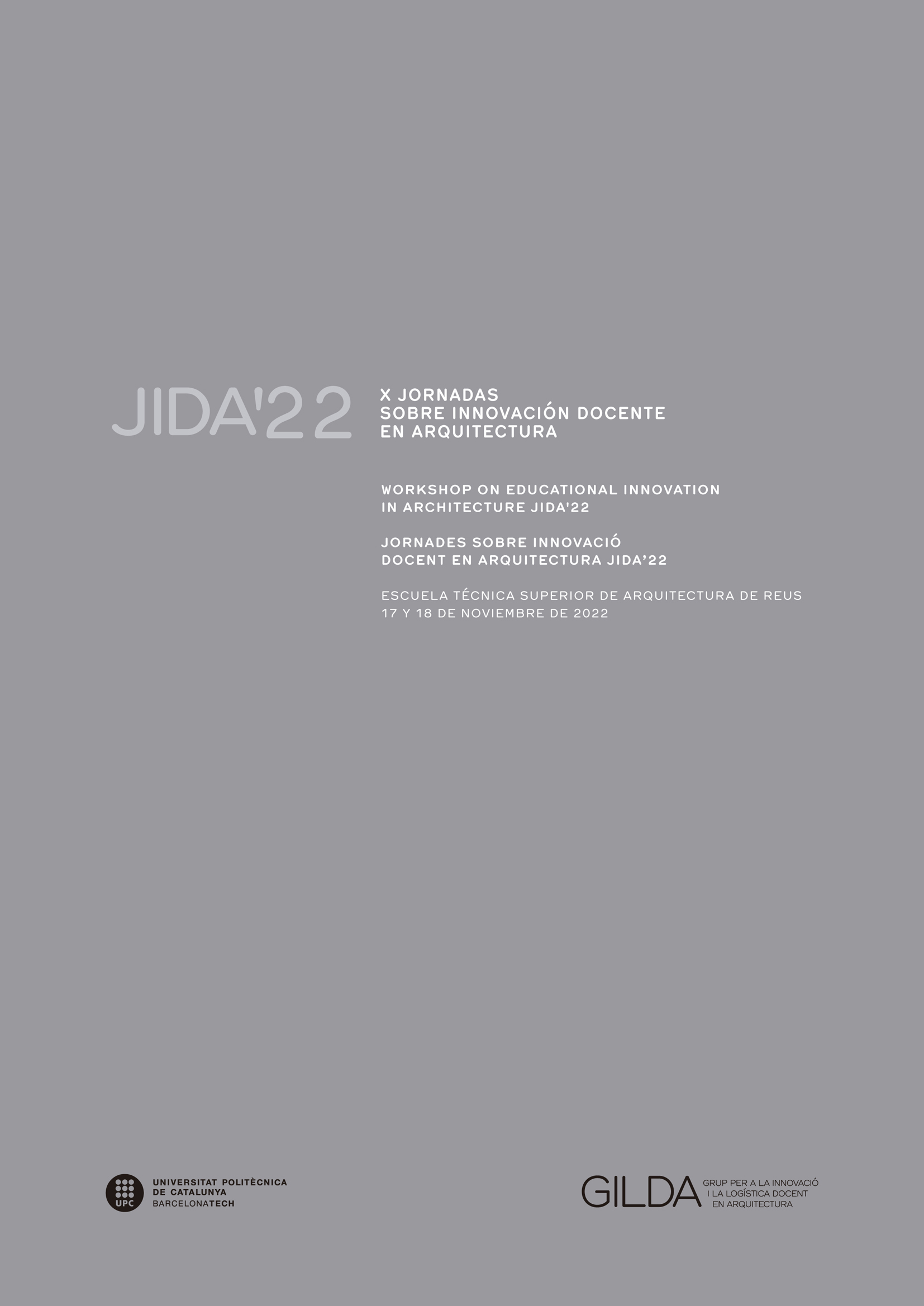PBTL
project based technology learning
DOI:
https://doi.org/10.5821/jida.2022.11531Keywords:
experimental pedagogy, PBL, motivation, technical subjects, group workAbstract
Fact-based knowledge prevails in the teaching of technical subjects, but the professional practice of architecture requires that we give the same importance to know-how. This paper presents a proposal that seeks to emulate architectural practice by developing a project from the technical approach of four subjects: Geometry I (1º), Installations I (2º), Structures I (2º) and Structures III (3º). The proposal received funding thanks to the university's own teaching innovation grants. The project required students to design and calculate an ephemeral pavilion with a wooden structure. Working collaboratively and vertically, that is, in groups with at least one student from each subject, the final work was evaluated in the four participating subjects. The aim of this proposal was to increase the motivation of the students by making them see the connection between the knowledge of the technical subjects in an architectural project.
References
ALARCÓN GONZÁLEZ, L. y MONTERO FERNÁNDEZ, F.J. (2018). Lecciones entre aprendices. La estructura vertical en las enseñanzas de arquitectura. JIDA: Textos de Arquitectura Docencia e Innovación 5, p. 685-695. <https://doi.org/10.5821/jida.2018.5540>
AROCA HERNÁNDEZ-ROS, Ricardo. (1999). ¿Qué es estructura? Cuadernos de Apoyo a la Docencia del Instituto Juan de Herrera. Instituto Juan de Herrera. ETS de Arquitectura, Madrid.
DEL CARMEN GIMÉNEZ-MOLINA, M.; PÉREZ, M.R.; GONZÁLEZ, M.P. y DEL MAR BARBERO-BARRERA, M. (2018). El aula invertida vertical. Una experiencia en la ETSAM-UPM. Jornadas sobre Innovación Docente en Arquitectura. <https://doi.org/10.5821/jida.2018.5510>
GUO, P.; SAAB, N.; POST, L.S. y ADMIRAAL, W. (2020). A review of project-based learning in higher education: Student outcomes and measures. International Journal of Educational Research, 102. <https://doi.org/10.1016/j.ijer.2020.101586>
KRAUSE, K.L. y COATES, H. (2008). Students’ engagement in first-year university. Assessment and Evaluation in Higher Education, 33(5). <https://doi.org/10.1080/02602930701698892>
LEIJON, M.; GUDMUNDSSON, P.; STAAF, P. y CHRISTERSSON, C. (2021). Challenge based learning in higher education-A systematic literature review. Innovations in Education and Teaching International. <https://doi.org/10.1080/14703297.2021.1892503>
LOBATO VALDESPINO, J.C. y FLORES ROMERO, J.H. (2021). Taller vertical, diseño de hábitat resiliente indígena: experiencia docente conectada. Jornadas sobre Innovación Docente en Arquitectura, 1(9). <https://doi.org/10.5821/jida.2021.10516>
MARSH, H.W. (1991). A multidimensional perspective on students' evaluations of teaching effectiveness: Reply to Abrami and D'Apollonia.
OLMEDO, C.; CALLE, A. y ANTUÑA, J. (2022). What is built and what is taught: The difference between teaching and professional practice in building structures. Architecture, Structures and Construction, p. 1-14. <https://doi.org/10.1007/s44150-022-00056-7>
RUIZ, G. (2013). La teoría de la experiencia de John Dewey: significación histórica y vigencia en el debate teórico contemporáneo. Foro de Educación, 11(15), p. 103-124. <http://dx.doi.org/10.14516/fde.2013.011.015.005>



















